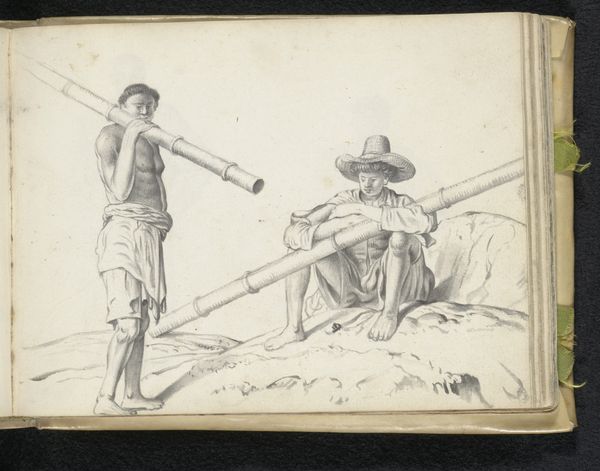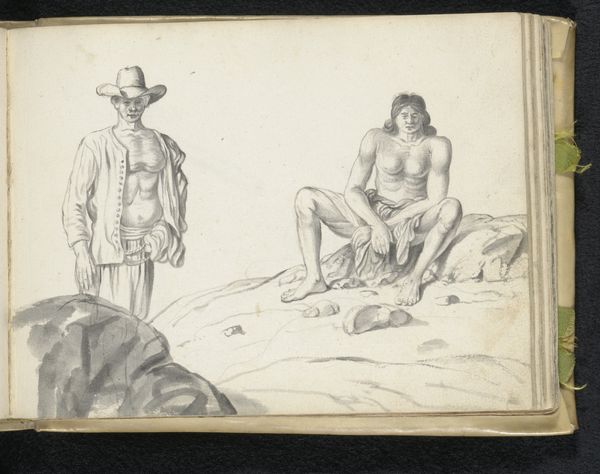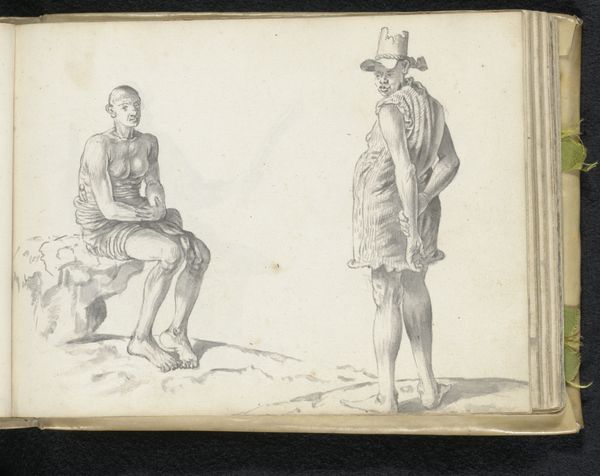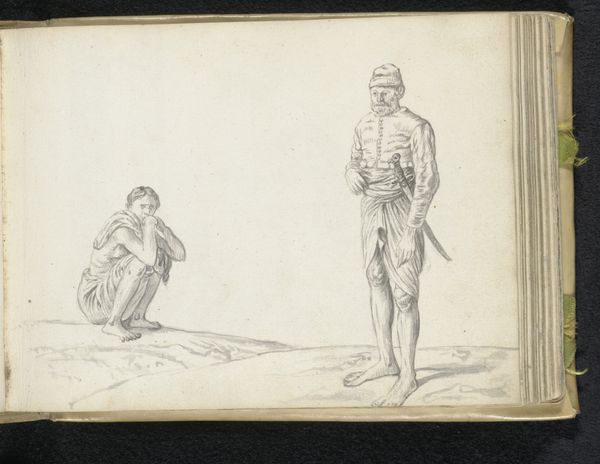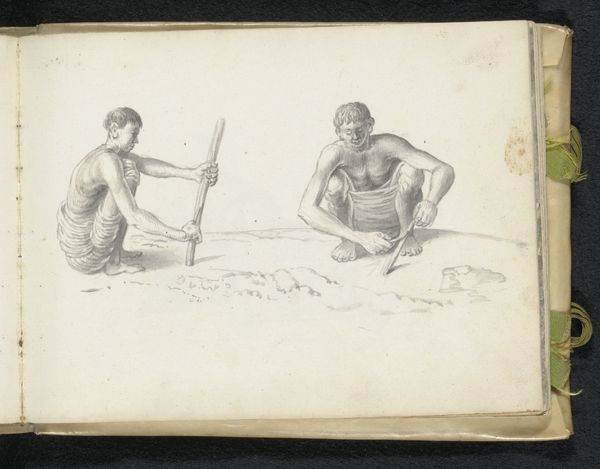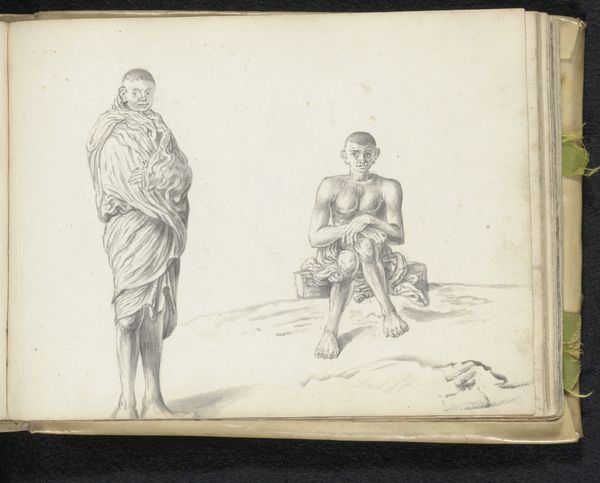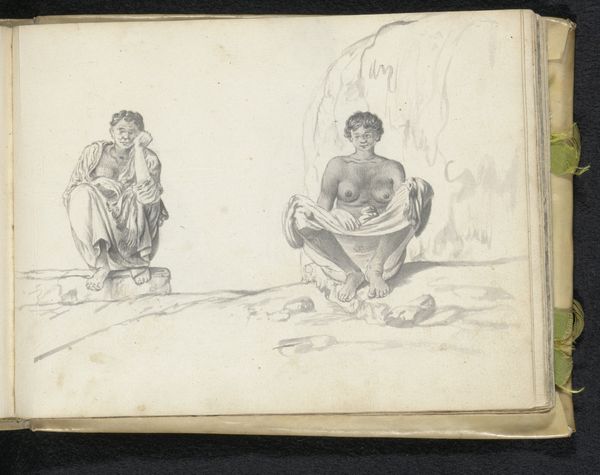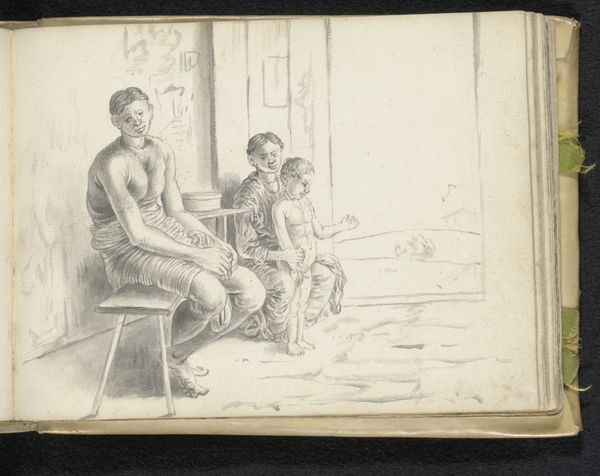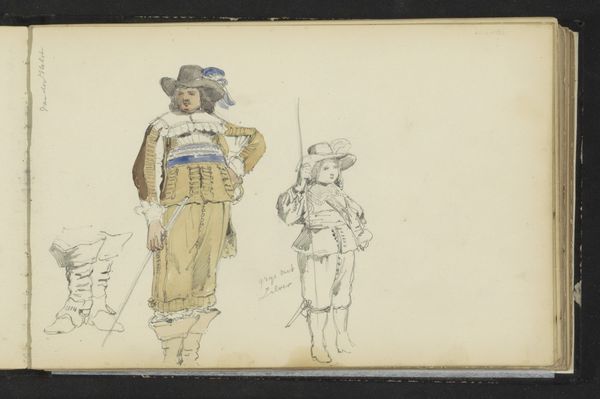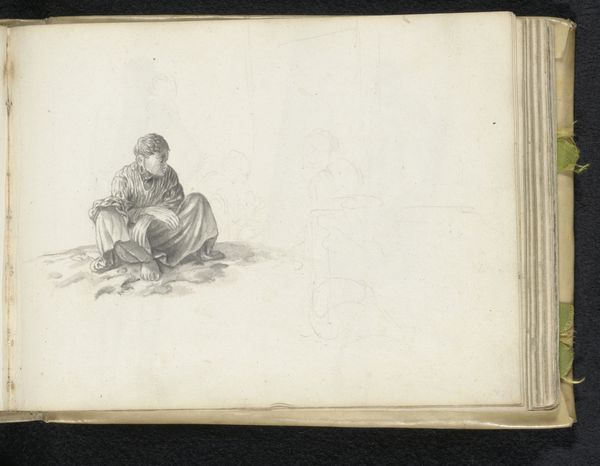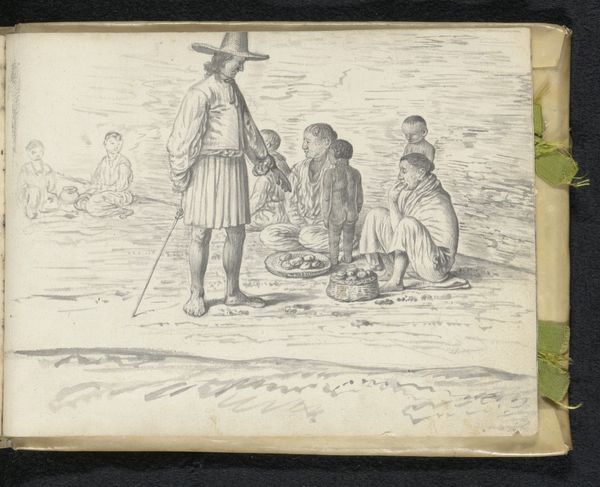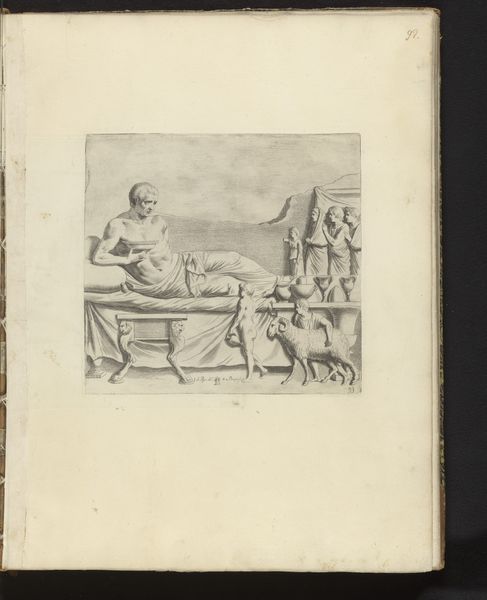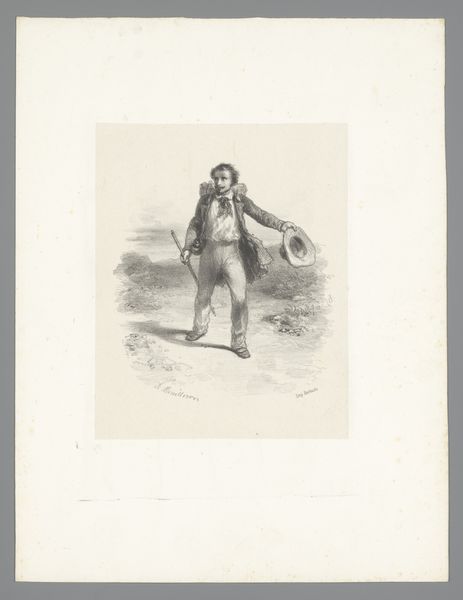
drawing, graphite
#
portrait
#
drawing
#
dutch-golden-age
#
landscape
#
figuration
#
coloured pencil
#
graphite
#
genre-painting
#
realism
Dimensions: height 148 mm, width 196 mm
Copyright: Rijks Museum: Open Domain
Editor: Here we have "Sinhalese man with knapsack," a graphite drawing by Esaias Boursse from 1662. I'm immediately struck by the simplicity of the scene, and its starkness. What can you tell me about this work? Curator: Well, the power of this image lies in understanding its socio-political context. Boursse was employed by the Dutch East India Company, and images like these served as documentation and, more subtly, as justifications for colonial expansion. This isn't just a portrait; it’s a study of the "other," viewed through a Western lens. Notice how the artist focuses on his bare torso but omits environmental details other than the staff and pouch at his side, stripping away cultural identifiers except for what could be bartered with. Editor: So, it's not necessarily an objective depiction then? Curator: Precisely. It’s presented as realism, a genre painting. But consider: who is the intended audience? This drawing, along with others from Boursse's travels, would have been circulated amongst the company and elite circles in the Netherlands. These images constructed an idea of Ceylon—present-day Sri Lanka—as a place ready to be possessed and “improved” by European influence. It plays a part in the much bigger scheme of rationalizing Dutch colonial actions, framing the people they encountered as almost a resource to be inventoried. Does this perspective change your initial reaction? Editor: It does. It’s unsettling to realize how a simple drawing could serve such a purpose. It definitely feels less objective now. Curator: And that is exactly the crucial element when looking at these images - the intent is seldom what it appears to be on the surface. Editor: I'll definitely look at art from this era with more critical eyes now, knowing how entangled art and politics really are! Curator: Exactly! Now you understand why History is so vital for appreciating art, in any time.
Comments
No comments
Be the first to comment and join the conversation on the ultimate creative platform.
